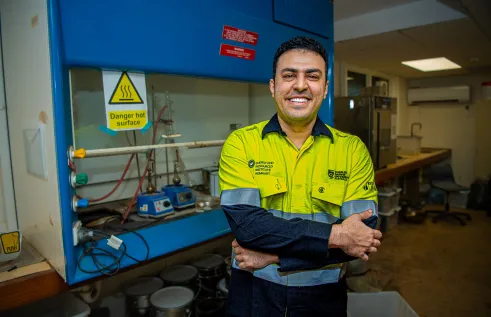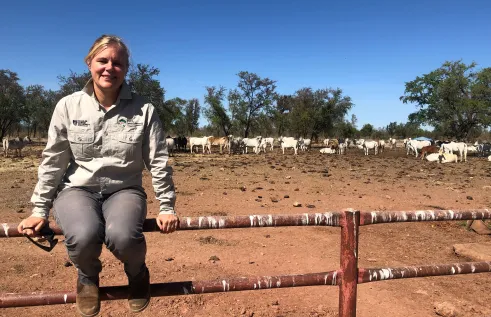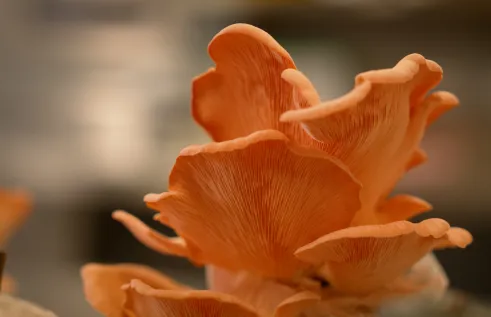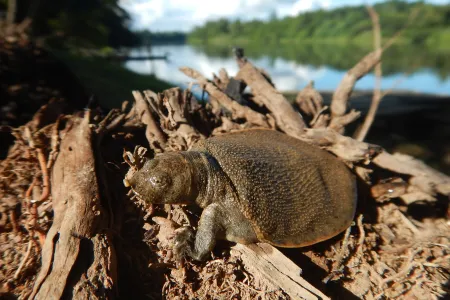News Article
Experts warn of species’ imminent extinction
A Charles Darwin University ecologist has joined 50 experts with the International Union for Conservation of Nature’s (IUCN) Tortoise and Freshwater Turtle Specialist Group to publish the most comprehensive study of the extinction risks for turtles and tortoises.
While the research published in Current Biology states that more than half of all 360 turtle and tortoise species face imminent extinction, the paper’s authors present recommendations to reverse the decline and save many species.
CDU’s Dr Carla Eisemberg is the IUCN red list (threatened species) coordinator for the Tortoise and Freshwater Turtle Specialist Group and is responsible for coordinating the decisions about the worldwide status of species.
“This research highlights the global plight of turtles,” Dr Eisemberg said.
The research indicates that hundreds of thousands of turtles and tortoises are collected worldwide for the wildlife trade every year.
Most turtles and tortoises are long-lived and slow-growing species, which means they cannot reproduce fast enough to replenish their populations that are taken from the wild.
According to the experts’ analysis and research, ending the illegal trade in wild turtles for food and the pet trade is a key part of a global conservation strategy.
The authors of the paper urge governments to enforce existing laws and effectively implement the CITES convention, which regulates the international trade of endangered and threatened species to prevent overexploitation.
The wildlife trade threatens many other species with extinction in addition to tortoises and turtles, and even poses health risks to humans.
In addition to ending the illegal wildlife trade, there are other actions that would protect turtles and tortoises. Many of their habitats in the wild are under threat. Scientists have identified 16 hotspots around the world that are home to a wide diversity of species and where protection of remaining natural areas will make a great difference.
The paper’s authors argue that local communities must be included as partners in protecting turtles and tortoises and their habitats. Ecotourism may be a model that can benefit humans and species living near them.
Dr Eisemberg, a specialist on Australian, South American and Papua New Guinea freshwater turtles and tortoises, is researching the importance of turtle species to Indigenous communities in the Northern Territory.
She said not much was known about freshwater turtles in the NT.
“One of the major threats to turtles is habitat destruction,” she said. “We know that buffalos can destroy their habitat and pigs can eat their eggs and the adults of some species that estivate (bury themselves during the dry season).”
She said recent research found evidence of a decline for the Northern Long Necked turtle.
“More research is also needed on the pig-nosed turtle in the Daly River, a species that is now consider endangered,” she said.
For more information visit: https://iucn-tftsg.org/about/
Related Articles

Where rubber meets the road: Old tyres are key to building tougher roads
Almost half of the Northern Territory’s worn-out tyres end up in landfills – with the rest exported interstate for recycling – but a study led by Charles Darwin University (CDU) is repurposing the discarded rubber to build stronger, sustainable roads that meet the NT’s unique needs.
Read more about Where rubber meets the road: Old tyres are key to building tougher roads
Moo-ving the boundaries: New research evaluates virtual fences for use on NT cattle stations
Cattle producers in Northern Australia face unique challenges when adapting tools like virtual fences on their properties, but new research from Charles Darwin University (CDU) is set to break down the barriers to this technology.
Read more about Moo-ving the boundaries: New research evaluates virtual fences for use on NT cattle stations
Cotton trash to treasure: Project using waste to grow new mushroom industry
Supermarket shelves could be stocked with mushrooms grown from the Northern Territory’s cotton waste, with a Charles Darwin University research project exploring the possibility of broadening the region’s agricultural industry.
Read more about Cotton trash to treasure: Project using waste to grow new mushroom industry
